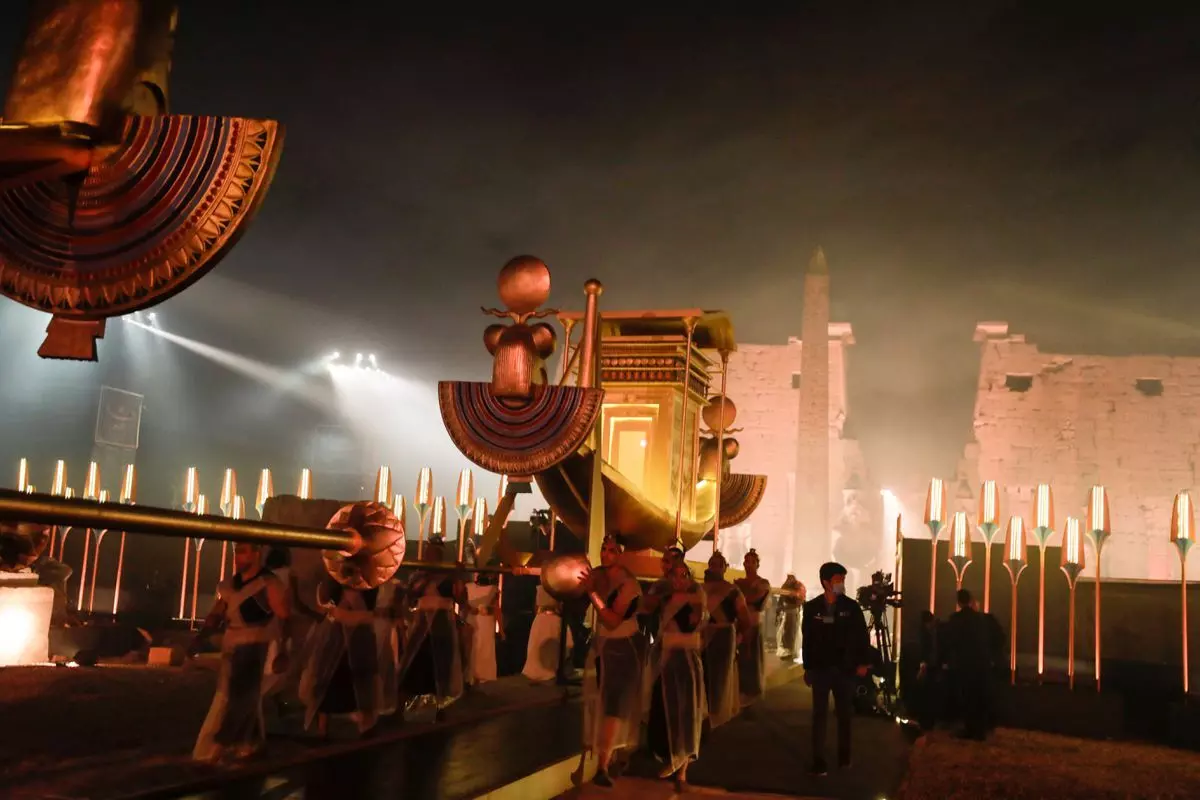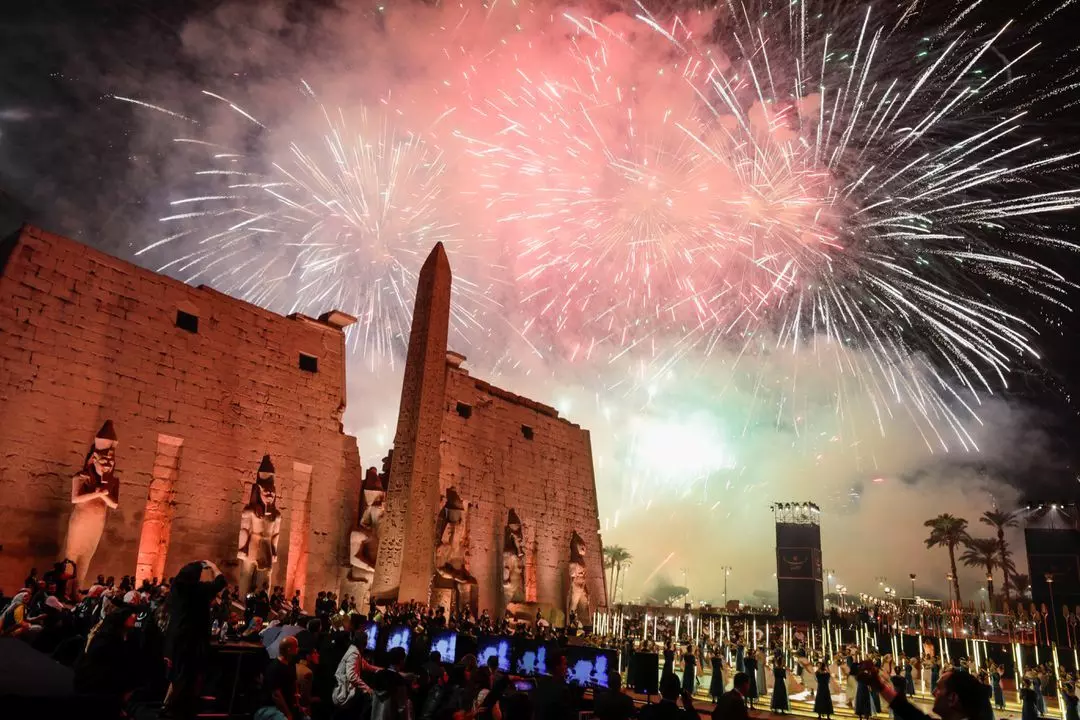
Ancient 'Avenue of Sphinxes' re-opened in Egypt
text_fieldsFireworks go off at the inaugural ceremony in Luxor (Image Credit: Mohamed Abd El Ghany/Reuters)
Cairo: A 3400-year-old road linking the ancient Egyptian temple complexes of Luxor and Karnak has been renovated and opened to the public by the Egyptian government in a grand ceremony on Thursday night. The ancient 'Avenue of Sphinxes' was an important walkway in old Egypt and is lined on both sides by statues of sphinxes, the legendary half-lion, half-woman creatures of mythology.
It is also known as the 'Avenue of Rams' due to some of the sphinxes possessing ram-heads instead of human heads. Egyptian President Abdel Fattah Al-Sisi was present at the inauguration ceremony where he marched down the 1.7-mile walkway along with hundreds of performers dressed in colourful pharaonic costumes mimicking the fashion of ancient Egypt, mimicking the ancient Opet ceremony where a "triad of deities" -- supreme god Amun-Re, his consort Mut and their son Khonsu -- were paraded by priests on wooden barques from Karnak to Luxor in a symbolic recreation of their marriage. The festival also marks the annual flooding of the Nile which brought life to Egyptian farming. A performance by the Union Philharmonic Orchestra was also the highlight of the evening.

The ancient path was discovered in 1949 by Egyptian archaeologist Mohammed Zakaria Ghoneim who uncovered 8 sphinxes near the Luxor temple. Archaeologists have estimated a total of 1057 original statues, a third of which already had been unearthed with the rest still pedestals, said antiquities minister Khaled el-Anani. The walkway took seven years to renovate as many of the sphinxes had been worn down by age. They have been identified as belonging to three different eras based on the shape, with the ram-headed sphinxes erected during the reign of King Tutankhamen, the ram statues by Amenhotep III and the lion-sphinxes by 30th Dynasty ruler Nectanebo I (380-362 B.C.)
Officials have stated that the event is meant to draw attention to the venerable city of Luxor and its rich historical heritage as well as drive-up tourism in Egypt, which has been hit hard by the Covid-19 pandemic as well as civil and political unrest in recent years. Egypt's tourism revenue fell to $4 billion in 2020 from a previous high of $13 billion. As air travel slowly picked back up this year the country has arranged various events to draw the eyes of tourists, including the procession of 22 royal mummies from Luxor and the nearby Valley of the Kings from Cairo's Egyptian Museum to the new National Museum of Egyptian Civilisation which was held in April.

















